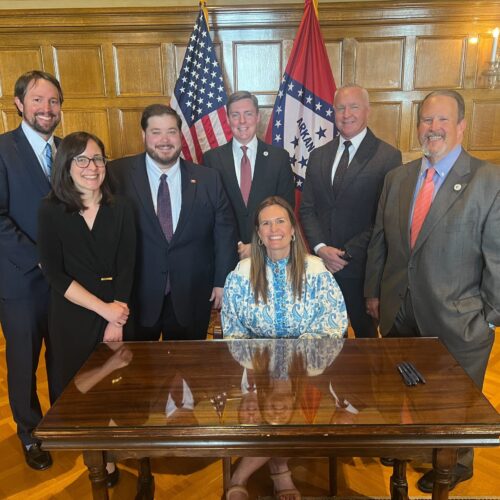North Dakota Governor Lauds Behavioral Health Program in State of the State Speech
On January 3, North Dakota Governor Doug Burgum delivered his State of the State address, highlighting progress on a number of fronts, including efforts to combat the state’s behavioral health crisis.
He touted the success of Free Through Recovery, an innovative behavioral health program for people who have mental illnesses, substance addictions, or co-occurring mental illnesses and substance addictions. Through this program, community-based agencies provide a range of services including comprehensive care planning, linking participants to services, peer recovery supports, and facilitating communication among treatment teams.
Free Through Recovery has served 500 people thus far, including Jyssica Noble, a woman whose “struggles with opioid addiction landed her in jail, left her homeless, and brought her to the brink of death,” Gov. Burgum said. He applauded Noble’s success in the program and recognized her “courage and commitment.” The governor and First Lady Kathryn Burgum learned about Noble’s struggles firsthand during a conversation with her as a part of the Face to Face initiative, a national call to action encouraging policymakers to personally engage with people who are closest to the correctional system.
Free Through Recovery was created as a result of 2017 Justice Reinvestment legislation that allowed the state to appropriate $7 million from the general fund to improve behavioral health treatment for people in the criminal justice system.
“Justice Reinvestment is just one great example of the power of reinventing government,” Gov. Burgum said in his address.
This project was supported by Grant No. 2015-ZB-BX-K001 awarded by the Bureau of Justice Assistance. The Bureau of Justice Assistance is a component of the Department of Justice’s Office of Justice Programs, which also includes the Bureau of Justice Statistics, the National Institute of Justice, the Office of Juvenile Justice and Delinquency Prevention, the Office for Victims of Crime, and the SMART Office. Points of view or opinions in this document are those of the author and do not necessarily represent the official position or policies of the U.S. Department of Justice.
Arkansas policymakers have long expressed concerns about the state’s high recidivism rate. Over the past 10 years, an…
Read MoreIn April 2025, Arkansas Governor Sarah Huckabee Sanders signed a package of bipartisan criminal justice legislation into law,…
Read More Explainer: Key Findings and Options from Arkansas’s Justice Reinvestment Initiative
Explainer: Key Findings and Options from Arkansas’s Justice Reinvestment Initiative
Arkansas policymakers have long expressed concerns about the state’s high recidivism rate.…
Read More Explainer: How a New Law in Arkansas Tackles Crime, Recidivism, and Community Supervision Challenges
Explainer: How a New Law in Arkansas Tackles Crime, Recidivism, and Community Supervision Challenges
In April 2025, Arkansas Governor Sarah Huckabee Sanders signed a package of…
Read More









